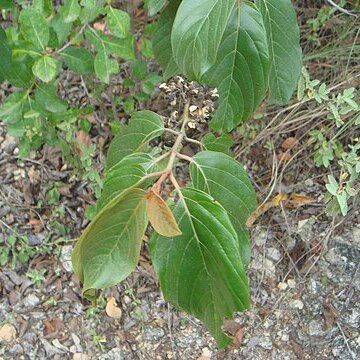Trees, to 20 m (in Panama). Leaves alternate, oblong-ovate, shortly acumi-nate, entire, the bases rounded, to 16 cm long and 8 cm wide, glabrous above, sparsely pubescent on the veins beneath, dark glands scattered on the under-surface; petioles 10-12 mm long, sparsely pubescent, stipules not apparent.
A tree. It grows 20 m high. The trunks are 20-30 cm across. The leaves are alternate. They are narrowly oval and tapers to the tip. The leaves are 16 cm long by 8 cm wide.
Of tropical American forests, is a species of large shade tree planted here and there in East Africa (e.g., Tanganyika, Mwanza District, Ukerewe I., Conrads 717 !).


